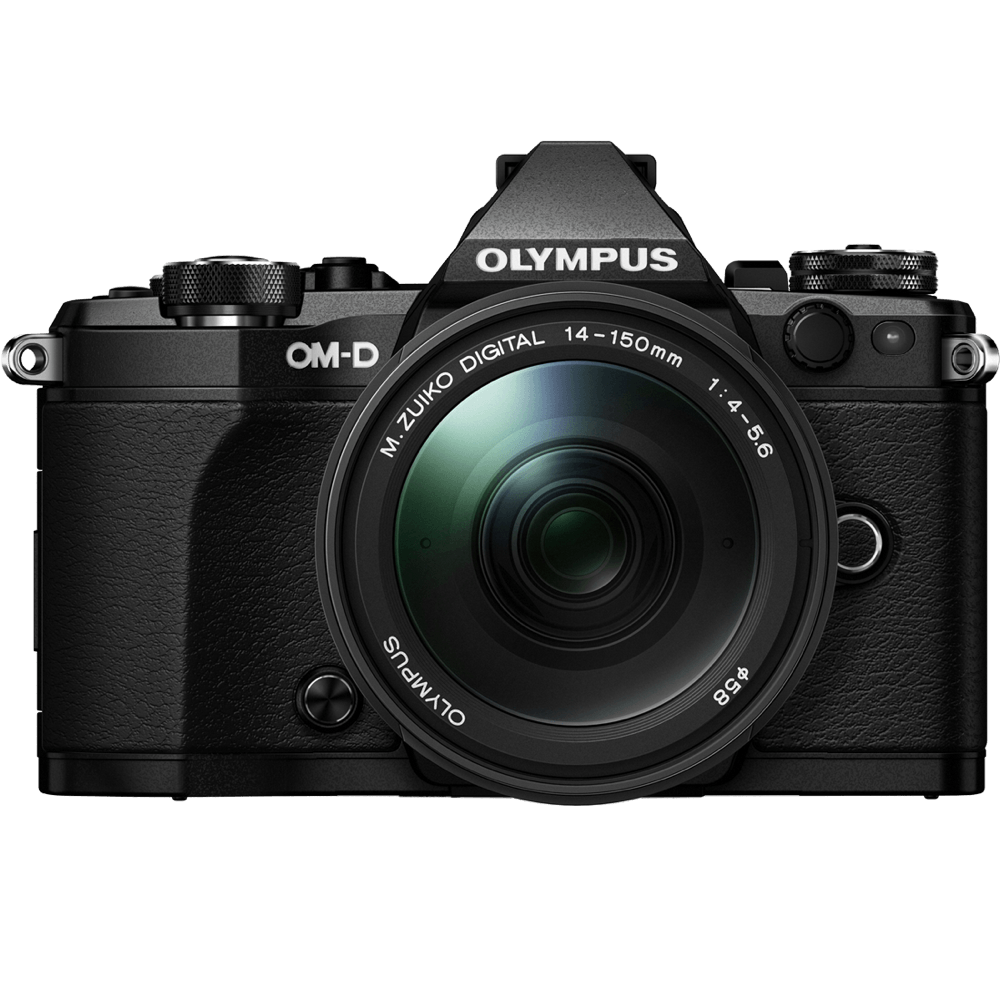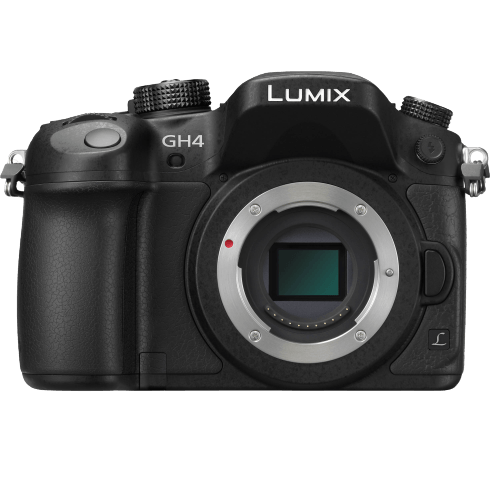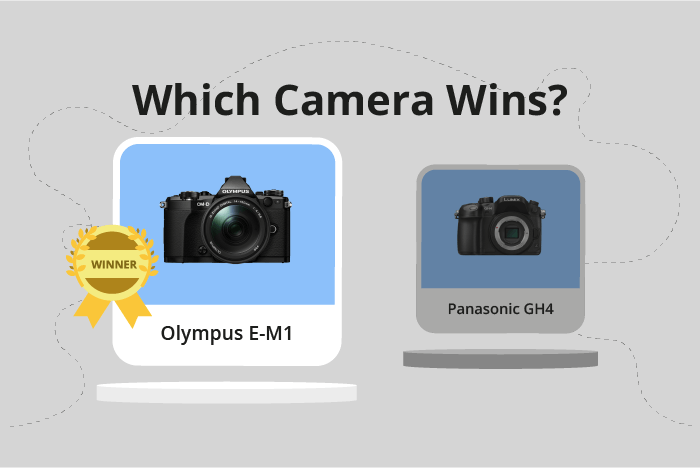Olympus OM-D E-M1 vs Panasonic Lumix DMC-GH4 Comparison
Olympus OM-D E-M1

Panasonic Lumix DMC-GH4

The Olympus OM-D E-M1 narrowly edges out the Panasonic Lumix DMC-GH4 with a score of 59/100 compared to 58/100. Both cameras are mirrorless and were released in 2013 and 2014, respectively. They share similar dimensions, with the E-M1 measuring 130 x 94 x 63mm and weighing 497g, while the GH4 measures 133 x 93 x 84mm and weighs 560g.
The E-M1 has the advantage of a lower launch price at $1399 compared to the GH4’s $1700. However, the GH4 has its own merits, offering a slightly larger size that may provide a more comfortable grip for some users.
Taking these factors into account, both cameras offer unique benefits. The Olympus OM-D E-M1 is the winner in terms of score and price, while the Panasonic Lumix DMC-GH4 might be preferable for those seeking a larger camera body.
Olympus OM-D E-M1 vs Panasonic Lumix DMC-GH4 Overview and Optics
The Olympus OM-D E-M1 triumphs over the Panasonic Lumix DMC-GH4 in optics with a score of 58/100 compared to 52/100. Both cameras share common specifications, including 16-megapixel CMOS sensors, Micro Four Thirds sensor size, and Micro 4/3 lens mounts. However, there are key differences that set them apart.
The E-M1 has a slight edge in megapixels at 16.3 and features image stabilization, which the GH4 lacks. This allows the E-M1 to capture sharper images, especially in low light conditions or when using longer focal lengths. Its TruePic VII processor contributes to improved image quality and faster processing times.
On the other hand, the GH4 has a shooting speed of 12, making it faster than the E-M1’s 10. This advantage can be beneficial for action photography, where capturing the perfect moment is crucial. Additionally, the GH4 has a marginally better DXOMARK score for the sensor at 74 compared to the E-M1’s 73, indicating a slightly better overall image quality.
Despite the GH4’s advantages in shooting speed and sensor quality, the E-M1’s image stabilization and higher megapixel count make it the superior choice in optics. The E-M1 is better equipped to handle various shooting situations and deliver clearer, sharper images. The GH4’s faster shooting speed and marginally better sensor quality do not outweigh the benefits offered by the E-M1’s image stabilization and higher megapixel count.
In comparing the optics of the Olympus OM-D E-M1 and the Panasonic Lumix DMC-GH4, the E-M1 stands out as the better choice due to its image stabilization and higher megapixel count. While the GH4 has its advantages, they fail to surpass the E-M1’s overall optical performance.
Olympus OM-D E-M1 vs Panasonic Lumix DMC-GH4 Video Performance
The Panasonic Lumix DMC-GH4 outperforms the Olympus OM-D E-M1 in video capabilities with a score of 70/100 compared to 57/100. Both cameras share some common features, such as built-in time-lapse functionality. However, the GH4 has superior video specifications, making it the better choice for videographers.
The GH4’s most significant advantage is its 4K video resolution, offering 4096 x 2160 pixels compared to the E-M1’s Full HD resolution of 1920 x 1080 pixels. This higher resolution allows for more detailed and sharper video footage, which is crucial for professional videography. Additionally, the GH4 has a maximum video frame rate of 24fps, which is suitable for cinematic video recording.
On the other hand, the E-M1 has a higher maximum video frame rate of 30fps, which can provide smoother motion in videos. However, this advantage is limited by its lower resolution. Despite this, the E-M1 might appeal to casual users who prioritize smooth video playback over resolution.
In terms of video capabilities, the Panasonic Lumix DMC-GH4 is the clear winner due to its 4K resolution and suitable frame rate for cinematic recording. The Olympus OM-D E-M1 may have a higher frame rate, but its lower resolution makes it less suitable for professional videography. Ultimately, the GH4’s superior video performance justifies its higher score, making it the better choice for those seeking top-notch video quality.
Olympus OM-D E-M1 vs Panasonic Lumix DMC-GH4 Features and Benefits
The Olympus OM-D E-M1 and the Panasonic Lumix DMC-GH4 both receive a feature score of 70 out of 100, indicating a tie in terms of their overall features. Several specifications are common between these two cameras, which contribute to their equal scores. Both cameras have a 3-inch screen size, touchscreen capabilities, flip screens, and lack GPS. Additionally, both cameras offer WIFI connectivity but do not have Bluetooth features.
Despite having the same feature score, there are areas where the Olympus OM-D E-M1 outperforms the Panasonic Lumix DMC-GH4. The OM-D E-M1 has a slightly higher screen resolution, with 1,037,000 dots compared to the GH4’s 1,036,000 dots. This difference in resolution results in a marginally better display quality for the OM-D E-M1.
On the other hand, the Panasonic Lumix DMC-GH4 has its own advantages over the Olympus OM-D E-M1. While the difference is minimal, the GH4’s strengths lie in its equal performance in the shared specifications, such as screen size, touchscreen, flip screen, and WIFI connectivity.
Given the equal feature scores and the minor differences in screen resolution, it is clear that both the Olympus OM-D E-M1 and the Panasonic Lumix DMC-GH4 are comparable in terms of their features. Each camera has its own strengths, and potential buyers should consider other factors such as price, design, and personal preferences when making their decision.
Olympus OM-D E-M1 vs Panasonic Lumix DMC-GH4 Storage and Battery
The Panasonic Lumix DMC-GH4 outperforms the Olympus OM-D E-M1 in storage and battery, scoring 60/100 compared to the E-M1’s 21/100. Both cameras accept SD, SDHC, and SDXC memory cards. However, the GH4 offers two memory card slots, while the E-M1 has only one. This provides greater storage capacity and flexibility for the GH4.
In terms of battery life, the GH4 also has an advantage with 500 shots per charge, compared to the E-M1’s 350 shots. Both cameras use different battery types: the GH4 uses the DMW-BLF19, and the E-M1 uses the BLN-1. Neither camera offers USB charging capabilities.
Despite the E-M1’s lower score in storage and battery, it still provides adequate performance for many users. However, the GH4’s longer battery life and additional memory card slot make it a superior choice for extended shooting sessions and increased storage needs.
Olympus OM-D E-M1 vs Panasonic Lumix DMC-GH4 – Our Verdict
Are you still undecided about which camera is right for you? Have a look at these popular comparisons that feature the Olympus OM-D E-M1 or the Panasonic Lumix DMC-GH4:

